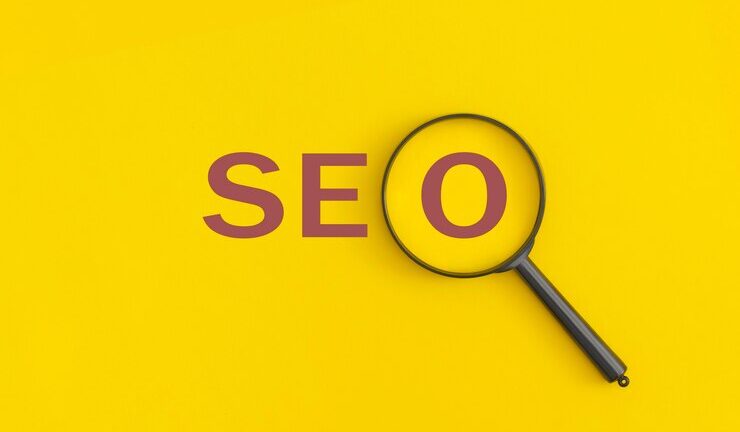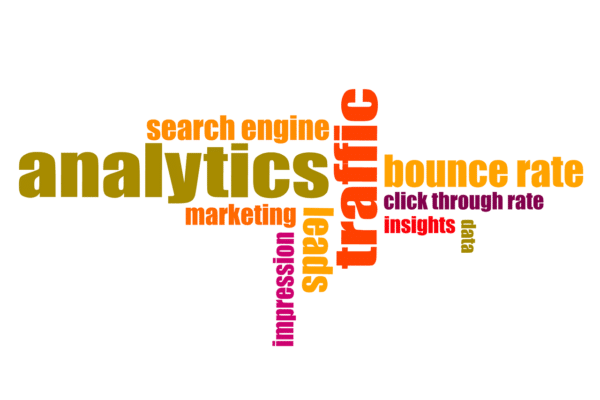Search Engine Optimization or SEO , is the procedure of optimizing websites so that they rank well on search engines through organic (non-paid) searches. This is one of the most crucial marketing strategies for any business.
Because Google aims to serve a positive user experience for its searchers, it wants to present the finest possible information available. Therefore, the focal point of SEO efforts should be the process of making sure search engines recognize your content as the outstanding information on the web for a particular search query.
- What is Search Engine Optimization?
- Types of search engine optimization in Digital Marketing
- Benefits of SEO/ search engine optimization
- Limitations of SEO/search engine optimization
- Techniques of SEO/search engine optimization
- search engine optimization/SEO TOOLS
- What algorithms evaluate search engine optimization?
- see also about white Hat SEO and Black Hat SEO
- What is social media marketing?
What is Search Engine Optimization?
Search engine optimization is the science and art of improving a website to increase its visibility when people search for products or services. The more clarity a website has on search engines, the more likely it is that brand captures business.
Website visibility is commonly deliberate by the placement or ranking of the site on search engine results pages (SERPs). And companies always strive for the first page, where they are most likely to garner the most attention.
Using Google as an object, SERPs often feature ads at the top of the page. These are positioning those businesses are enthusiastic to pay for to ensure placement on that first page. Following ads are the regular search listings, which marketers and search engines refer to as integral search results. The SEO process aims to increase a business’s organic search results, and propulsive organic search traffic to the site. This enables data marketers to differentiate between traffic that comes to a website from other channels such as paid search, social media, referrals, and direct and organic search traffic.
Organic search traffic is usually exceptional traffic because users are actively searching for a specific topic, product, or service for which a site might rank. If a user catches that site through the search engine, it can lead to better brand engagement.
Types of search engine optimization in Digital Marketing
- On-Page SEO / search engine optimization: all the measures that take to make a web page rank higher on search engines fall under this umbrella. On-page SEO includes authoring high-quality content with the sole purpose of it proving helpful to your website visitors, adding meta tags to help google bots to better understand the content, using HTML tags to highlight headings and other content elements, and ensuring there is no broken links/ duplicate content on pages.
- Off-page SEO/search engine optimization: off-page SEO refers to everything you do outside of your website to fare better and feature higher in Google SERPs. It includes working on external ranking factors like building links from trusted sites in the same domain as your successful social media marketing, having customers give you a positive review on various online forums, etc.
- Technical SEO/search engine optimization: Technical SEO largely helps Google bots successfully crawl, interpret, and index all the pages of your site for future use. Creating a thorough XML sitemap, making your site mobile-friendly, and adding structure to help web crawlers sort and categorize your pages based on the type of content they carry are just some of the techniques used.
Benefits of SEO/ search engine optimization
SEO can be extremely powerful too in your marketing arsenal. Some key benefits of SEO include a very high return on investment, expanding your reach to thousands of searchers outside of your normal client network, and results that last beyond your scope of SEO service.
- High Return on investment: Historically, Search Engine Optimization has performed very well in terms of ROI. A 2018 study found that Google was the Single-largest traffic driver to websites, far outstripping social media channels and cementing the importance of showing up on Google searches. A big reason SEO produces such a high ROI is that it attracts high-converting traffic. SEO aims to show up when people actively search for your products or services. In many cases, a customer is ready to purchase when they act the search, so when they find your website at the top of the results the chances of them switching into a client skyrocket.
- Expand your Reach: Word of mouth referrals constitute a major part of a business’ growth, and it isn’t going away any time soon. Many companies don’t recognize that SEO allows them to tap into a vast network of potential clients far greater than the network of word-of-mouth clients can reach. Whether on a local or national level, your website can exponentially increment the number of people who learn about your business.
- Lasting results: Another extensive benefit of SEO is the residual benefit you’ll see from it. SEO isn’t as unstable as a service like PPC, for example. With PPC, it’s as simple as elated a light switch – fund the account and get leads. However, as soon as it turns off your supremacy dries up. With SEO, you may diminish your monthly budget into a maintenance mode, but still enjoy full-scale rewards with the visibility you’ve established. While these results usually aren’t perpetual, they are certainly longer-lasting than many marketing channels.
Limitations of SEO/search engine optimization
While the benefits of doing SEO are clear, there can be downsides that will play important roles in your decision-making process. These combined looking at SEO as a long-term investment & not a short-term solution, no guarantees in results, and the risk of playing in a highly competitive search engine optimization market.
- Long-term play: One of the biggest disadvantages of SEO is the time it takes to produce results. SEO is truly an act of accumulation and there are many factors to consider before giving someone an estimate on how long it will take for the campaign to get traction. Google themselves says to give an SEO company 4-12 months to yield results. At Firestarter SEO, we usually see campaigns get their first absolute success between 4-6 months, with improving results escalating from there. If you need a fast solution to expand your sales, SEO probably isn’t the right answer.
- No Guarantees: Another downside to pursuing SEO is that there is no assurance it will work. Google specifically alerts businesses against companies that offer guaranteed 1st-page results. The fact is, the algorithm is continually changing, with rankings fluctuating daily. Additionally, months of work and progress could be negated by a major change to how Google appraises a website, as some businesses have experienced eyewitness a variety of algorithm changes over the years.
- Competition: We occasionally encounter businesses that compete in a space that is truly soaked with the competition. With a limited budget, it could potentially take a long time to catch up. Or, a company that was once the top dog in the rankings suddenly finds itself trailing the 8-ball, as their competitors grew wise to the power of an effective SEO strategy and bounce the former leader. SEO needs almost constant investment to maintain its effectiveness and a positive return on investment.
While any marketing investment takes serious blue-print and consideration, SEO is no exception. Understanding the potential pitfalls of investment is the bottom line to success. However, despite the disadvantages one may encounter with SEO, more often than not the advantages far outweigh any potential risk.
Techniques of SEO/search engine optimization
- Keyword research and selection. Perform keyword research on the terms which are most desirable to rank. Businesses should focus on keywords that receive high search volume to be relevant to search engines. Looking at competitors’ top-performing keywords also allows for building a strategy to compete with them.
- Create quality content. When the keyword strategy is in place, the content approach follows. Pages are more likely to arrive higher on SERPs by creating quality content that is relevant to the readers and their search queries.
- Develop unique page titles and meta descriptions. Page titles should carry the page’s focus keyword. And meta descriptions should be summaries of what a user should expect to learn on the page. These fundamentals are displayed in SERPs and will likely be what people use to inform their clicks.
- Use pays per click to supplement organic traffic. Paid advertising can help boost organic click-through rates by giving marketers an outlet to test title tags and meta descriptions that are shown in SERPs. Ensuring the first-page placement, these ads mimic organic search results to see what copy entices users to click. That can be used to alter page titles and meta descriptions with organic results.
- Use alt text with images. Alt-text is used to describe an image on a webpage. This is tough for bots crawling the site to understand what the image represents. It also verbally characterizes what the image is to people who are visually impaired. This is also other opportunity to input keywords.
- URL slug. A URL slug is the portion of the URL that is rare to a specific page. This is also an area where it is essential to put the focus keyword as it relates to what is on the page.
search engine optimization/SEO TOOLS
There are hundreds of tools to improve, manage and report on the convincingness of SEO. Some are free and some aren’t. But they all help marketers research keywords, develop strategies, and amplify the results of ranking higher on SERPs. Given below are some frequent SEO tools used by marketers today:
- Semrush. This platform is well-used for keyword research and online ranking data. It gives marketers intuition about developing and maintaining keyword strategies. Semrush also can be used to weight SEO performance over time.
- Google Analytics and Search Console. This platform caters to real-time data on the effectiveness of SEO. Combined with Google’s Search Console, marketers can audit website traffic, optimize rankings and make informed decisions about the appearance of a site’s search results.
- Yoast SEO. For websites using WordPress as their CMS, Yoast SEO is a plugin used to enhance on-page optimization. Users can construe the URL slug, meta description, and page title. They can also see how the content on their page may execute in searches. A checklist of items is available so users can assure their page is as optimized as possible.
- Ahrefs. This tool is used to audit websites and provide a keyword, links, and ranking profiles. It can also describe which pages perform the best and which ones need improvement.
- SpyFu. This is a challenger keyword research tool for Google Ads. In addition to the keyword research and data it can produce, it gives detailed observation into competitor Search engine optimization and pay-per-click data.
- HubSpot Website Grader. This is a free tool that delivers report cards with prosecutable insights about Search Engine Optimization performance. It can show if a website is optimized for mobile, measures website performance, and gives security recommendations.
- Google Trends. This tool looks for content movement in countries or regions of the world. It searches popular topics and long-tail keywords related to them. It also analyses those trends over time.
- Bing Webmaster. This tool facilitates marketers to see backlink profiles and keyword research. It also has a built-in site scanning mark.
- Consultants. While not absolutely a tool to purchase or use for free, consultants have the Search Engine Optimization expertise that some teams lack internally. Good consultants can help develop the right strategies and execute or recommend a long-term plan. They can also report on the metrics to regulate success.
What algorithms evaluate search engine optimization?
There are hundreds of factors that go into what content from the index gets displayed in a SERP. However, they bubble up into five key factors that help arbitrate which results are returned for a search query.
- Meaning of the query. To return relevant results, the algorithm needs to first enact what information the user is searching for. This is known as intent. To understand hell-bent, the algorithm is looking to understand language. Interpreting spelling mistakes, synonyms, and that some words mean different things in different contexts all play into the algorithm’s understanding of searcher intent. For example, search engines would need to be able to differentiate between “bass” as a fish and “bass” as an instrument. The intent would be based on additional search terms, historical search, location search, and more to display the correct information.
- Relevance of web pages. The algorithm analyses webpage content to assess whether the sites contain information relevant to what a user is looking for. This comes after intent is established. A basic signal for applicability would be if the webpage includes the keywords used in the search. This incorporates showing up in the body copy or page headings. But beyond keyword matching, search engines use aggregated interaction data to dispose of if the page is relevant to the search query. This looks at suited data from previous searches to match the page with the query.
- Quality of the content. Search engines aim to prioritize the most reliable sources available. The intelligence built into the algorithms can identify which pages demonstrate expertise, authoritativeness, and trustworthiness about the intent.
- Usability of web pages. Web design and accessibility play a big role in search rankings. The algorithm looks for how the site arrives in different browsers, if it’s designed for different device types — such as desktops, tablets, and phones — and if the page loading times work well for users with lethargic internet connections.
- Context and settings. Search engines and their algorithms use information from past search history and search settings to help derive which results are most useful to a user at that moment. Country and location can be used to deliver content admissible to the area from which someone is searching. For example, someone searching for “football” in New England would get different results than someone entering the same query in England.





One thought on “Search Engine Optimization”